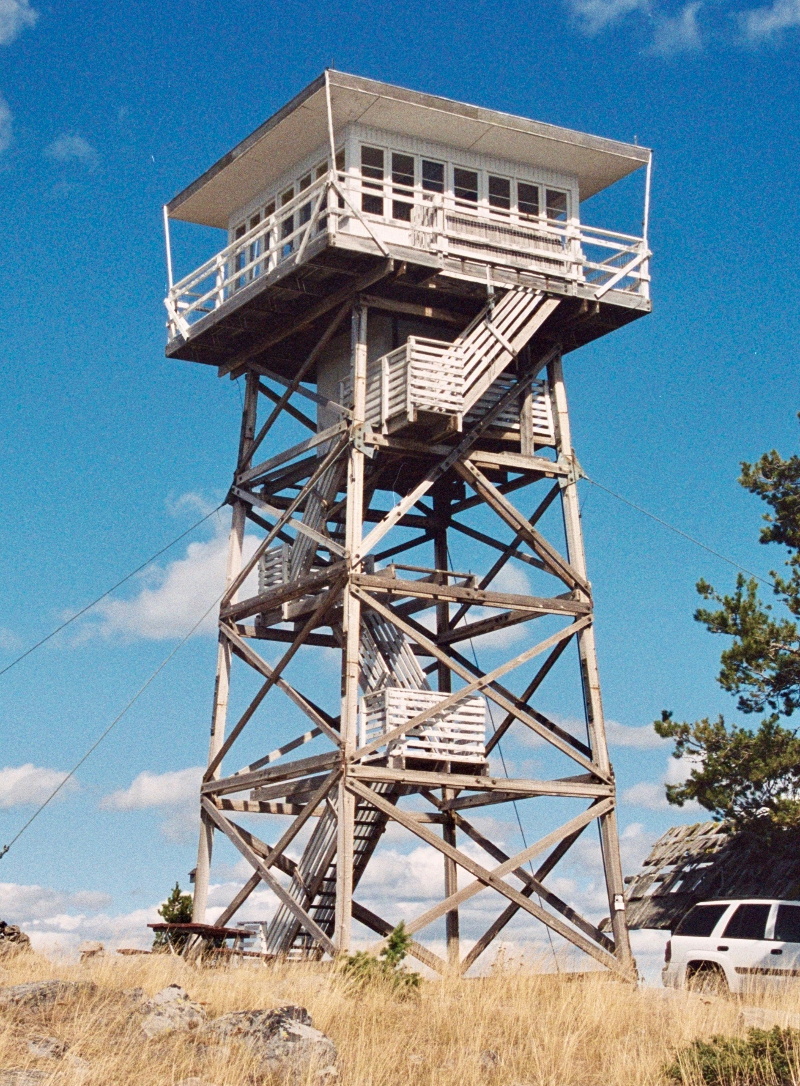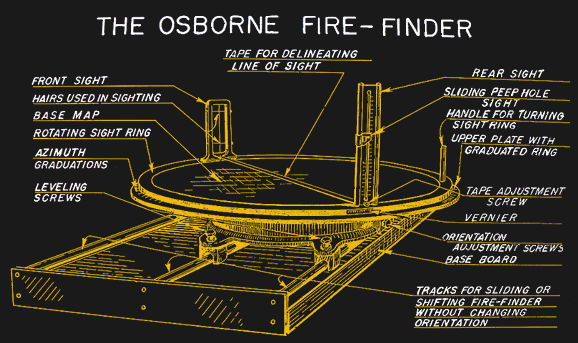
For more than a hundred years, the US Forest Service has hired men and women to monitor the state of vast forest expanses from isolated observation towers. These observers, armed only with binoculars and a map, served as an early warning system for fighting fires. Gradually, the towers were equipped with walkie-talkies, and then cellular communications or satellite Internet connections, however, in addition to these innovations, the work of monitoring the forest has changed little since the beginning of the 20th century.
The work of the forest fire observer is surrounded by a certain romance, reminiscent of the work of lighthouse keepers in the past. Most of the time they sit alone on their tower, looking at the horizon that struck them in memory for years or even decades of observation, and carefully monitor to see if there is even the slightest hint of smoke. For some of them, this isolation seems like a prison, for others - a paradise. Writer Jack Kerouac spent the summer of 1956 at the Washington State Desolation Peak observation tower, and then described his experience in several works, including in the novel Angels of Devastation.

However, very slowly, almost invisibly to the public, the era of fire monitoring is drawing to a close. With the improvement of technology, the idea of putting a person on top of a high tower so that he spent many months there seems more and more archaic. Many people are actively opposed to the idea of replacing people with machines, but in the case of fire monitoring, this idea is hard to argue. Computer vision gives us a tireless eye capable of detecting the smallest columns of smoke on many hectares of forests, and GPS drones can tell the exact location of this smoke and assess the situation on the spot without jeopardizing human life.
At some point, more than 5,000 permanent fire observation posts were involved in US forestry, but today this number has decreased to a few hundred. And while this work gradually goes into oblivion, let's study the most famous [ in the USA / approx. perev. ] a tool for monitoring fires and modern technology designed to replace it.
Fire Osborne
In fact, the work of the observer is to detect and identify the first signs of a possible fire on the ground. This work boils down to a thorough inspection of the horizon for signs of smoke, and if detected, to the construction of the location of this smoke on the map, as well as to the transfer of this location to fire brigades. And all that an observer needs for this is a map of the tracked area, and, ideally, binoculars or a small telescope. And until the 20th century, they had nothing more at their disposal.

But in 1911, William Bushnel Osborne invented the tool, which later became a characteristic feature of fire observers: the Osborne Fire Finder . This is a type of alidade (goniometer), consisting of a large round map of the surrounding area and a device for observation rotating above it. In some versions of the fireoscope, a rifle scope was used, in fact, but on others there was just a piece of metal with a drilled hole. In any case, the observer had to rotate the fireoscope until he saw through the scope the base of the column of smoke.
The center of the round map indicates the location of the tower, and degrees are printed around the circle. When the observer sees smoke, the angle of rotation noted on the fireoscope corresponds to the azimuth to the target. This indication can be transmitted to the nearest towers, and if they can see this smoke, it is possible to triangulate the location of the fire.
If there are no towers in this area, or they do not see smoke, the operator can conduct an estimated height measurement to estimate the distance to the fire. With azimuth and a sense of the distance to smoke from the base of the tower, ground crews receive at least a starting point for searches.
Back to the Future
Osborne's fireoscope was a simple device with several moving parts, and yet, after proper installation and calibration, it allowed firefighters to detect danger with unprecedented accuracy for that time. The U.S. Forest Service did not have a better way to locate a fire before the use of aircraft made practical sense. Nevertheless, a fireoscope was a good option, since it was a cheap and easy-to-use device.
Moreover, over the years, the fireoscope itself has evolved, and new versions have gradually improved its accuracy and usefulness. These gradual updates reached a peak by the 1934 version - this model was produced in an amount of more than 3,000 pieces, and distributed at fire observation posts both domestically and abroad. Surprisingly, this version of the device in the United States was produced until 1989.

Fire Detector Prototype SDTDC
However, by the beginning of the 2000s there was a problem. Throughout the country, old models of firescopes were still used, and the number of spare parts for them was decreasing. San Dimas Forest Service Technology Development Center (SDTDC) has decided to start replicating vintage devices. They compared different models of firescopes, dismantled them and built a model in AutoCAD. Several corrections were made based on the wishes of service veterans, and then prototypes of the new, improved model of the 2003 fireoscope, which were tested at the Ode Butte and Green Mountain in Oregon, were made.
After successful tests, the Californian company Palmquist Tooling began production of new firescopes and spare parts, most of which are backward compatible with older models. Among the updates was the replacement of cast iron components with aluminum to save weight, and the use of nylon bearings to reduce wear.
Eyes in the sky
Fire scopes, both old Osborne and modern from SDTDC, are still used. Due to the immobility of the tower, which serves as a reference point, they provide a simple and reliable way to determine the coordinates of a potential fire with sufficient accuracy. But today, automatic systems are already capable of doing this work faster and much more accurately than any person.
Today, several different high-tech fire detection approaches are used. A new space system came into play this summer, using data from several satellites in orbit, including the new GOES weather satellites, and providing continuous tracking of potential or ongoing forest fires. Updates from it come once a minute, and the system gives the rescue services a detailed overview of the situation in almost real time, allowing you to coordinate actions much more efficiently than in the past.
However, not everything is visible from space. To take a closer look at what is happening on earth without endangering people's lives, the use of drones that track fires was approved. They can get much closer to fire than guided vehicles or firefighters, and provide critical information about the best way to put out the fire. Similar drones provided invaluable assistance in extinguishing a fire in Notre Dame Cathedral, providing a revolution in fire fighting indoors.

Silent Falcon Solar Powered Electric Drone Used for Wildlife Monitoring
Peaks freaks
It is pointless to deny that the technology has almost eliminated the need for fire observation posts. Now the US Forest Service leases many of the observation towers, since satellites and drones now cope with the tasks for which they were built. But in some parts of the country, the towers are still staffed - people who call themselves "freaks at the peaks."
Even with all the modern technology available, human observation can still be useful. Firstly, it is inexpensive: most of the towers are used only in the summer, and employees are paid an average of $ 12 per hour. Some employees have been working on the same towers for decades, and have gained invaluable experience related to the nuances of this area, which can be critical in a crisis situation. Weather conditions must also be taken into account: it will be difficult for drones to fly during summer thunderstorms, which often cause forest fires.
But over time, even these benefits are likely to depreciate due to the emergence of new, more advanced automatic systems. Until then, a small army of men and women will climb their towers every spring, and watch the treetops alone, carrying with them only Osborne's fireoscope, assembled, most likely, several decades before their birth.